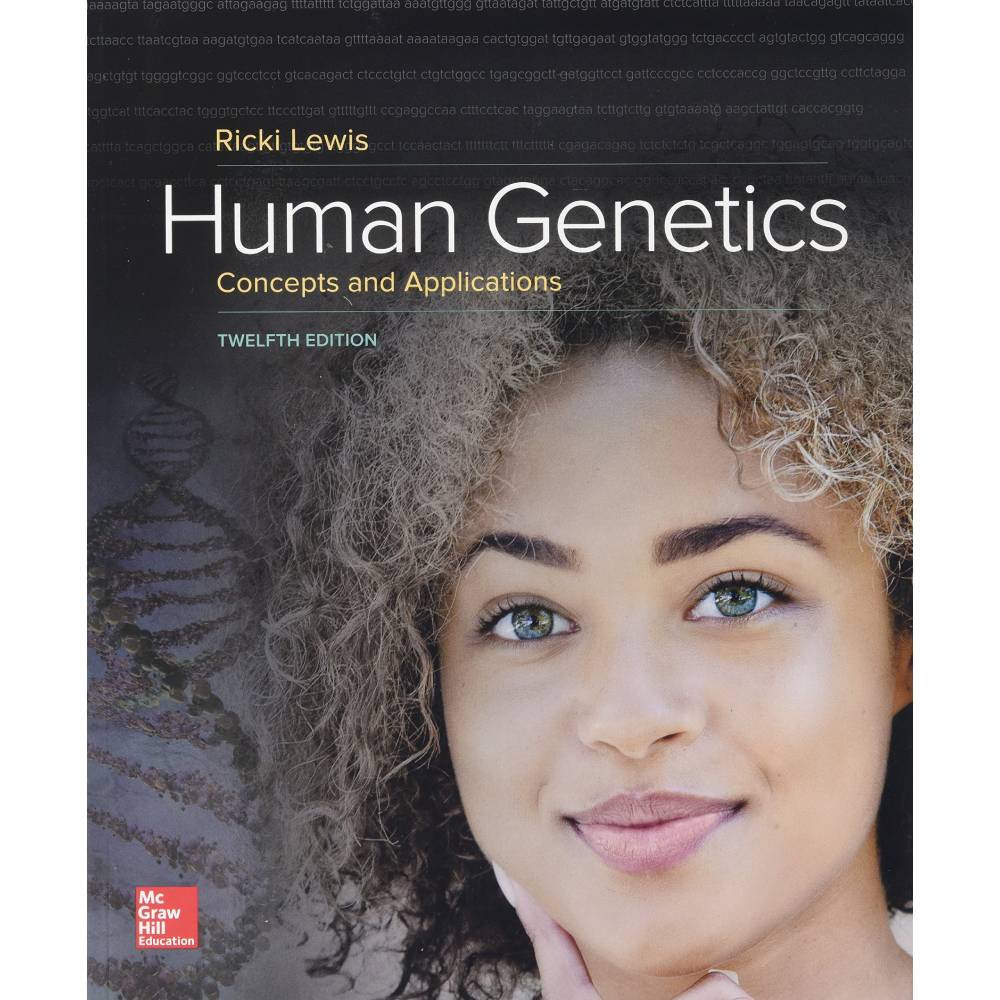Human Genetics 12th Edition By Ricki Lewis -Test Bank
$55.00
Human Genetics 12th Edition By Ricki Lewis -Test Bank
You will receive this product within 24 hours after placing the order
Human Genetics 12th Edition by Ricki Lewis -Test Bank
Chapter 11 Gene Expression and Epigenetics
MULTIPLE CHOICE QUESTIONS
1)
“Epigenetic” means
A)
“inside the gene.”
B)
“inside the protein.”
C)
“outside the gene.”
D)
“outside the protein.”
Answer:
C
Section:
11.01
Topic:
Epigenetics
Bloom’s:
02. Understand
Learning Outcome:
11.01 Define epigenetics.
2)
Modifiers of gene expression include
A)
isolated amino acids and tRNAs.
B)
specific classes of proteins and RNA molecules.
C)
specific classes of lipids and carbohydrates.
D)
nicotine and alcohol.
Answer:
B
Section:
11.01
Topic:
Epigenetics
Bloom’s:
01. Remember
Learning Outcome:
11.02 Explain how globin chain switching, development of organs, and the types of proteins cells make over time illustrate gene expression.
3)
Epigenetic changes
A)
pass from one cell generation to the next but do not alter the DNA sequence.
B)
do not pass from one cell generation to the next but do alter the DNA sequence.
C)
irreversibly alter the DNA sequence and are only passed to the next cell generation if they add an advantage.
D)
alter the RNA codon, which are amino acid assignments of the genetic code.
Answer:
A
Section:
11.01
Topic:
Epigenetics
Bloom’s:
02. Understand
Learning Outcome:
11.01 Define epigenetics.
4)
Globin chain switching replaces gamma chains with ________ chains in adult hemoglobin.
A)
epsilon
B)
zeta
C)
beta
D)
alpha
Answer:
C
Section:
11.01
Topic:
Epigenetics
Bloom’s:
02. Understand
Learning Outcome:
11.02 Explain how globin chain switching, development of organs, and the types of proteins cells make over time illustrate gene expression.
5)
Fetal hemoglobin carries ________ percent more oxygen than adult hemoglobin.
A)
5 to 10
B)
20 to 30
C)
50 to 60
D)
80 to 90
Answer:
B
Section:
11.01
Topic:
Epigenetics
Bloom’s:
01. Remember
Learning Outcome:
11.02 Explain how globin chain switching, development of organs, and the types of proteins cells make over time illustrate gene expression.
6)
The reason for fetal globin chain switching is that
A)
a fetus has four alpha globin chains and a newborn has four beta globin chains.
B)
a fetus’s blood is clear until the sixth month and then globin chains turn it red.
C)
the newborn needs more iron than the fetus or embryo.
D)
the embryo and fetus receive different concentrations of oxygen compared to after birth.
Answer:
D
Section:
11.01
Topic:
Epigenetics
Bloom’s:
02. Understand
Learning Outcome:
11.02 Explain how globin chain switching, development of organs, and the types of proteins cells make over time illustrate gene expression.
7)
Hemoglobin in the embryo consists of
A)
two epsilon chains and two zeta chains.
B)
two gamma chains and two alpha chains.
C)
two gamma chains and two beta chains.
D)
one alpha chain, one beta chain, one epsilon chain, and one gamma chain.
Answer:
A
Section:
11.01
Topic:
Epigenetics
Bloom’s:
02. Understand
Learning Outcome:
11.02 Explain how globin chain switching, development of organs, and the types of proteins cells make over time illustrate gene expression.
8)
A treatment for some forms of anemia is to take a drug that turns on transcription of fetal hemoglobin. This would increase the proportion of ________ globin chains.
A)
alpha
B)
gamma
C)
delta
D)
epsilon
Answer:
B
Section:
11.01
Topic:
Epigenetics
Bloom’s:
03. Apply
Learning Outcome:
11.02 Explain how globin chain switching, development of organs, and the types of proteins cells make over time illustrate gene expression.
9)
Fetal hemoglobin is hemoglobin that consists of two gamma chains and ________.
A)
two alpha chains
B)
two beta chains
C)
two zeta chains
D)
two epsilon chains
Answer:
A
Section:
11.01
Topic:
Epigenetics
Bloom’s:
01. Remember
Learning Outcome:
11.02 Explain how globin chain switching, development of organs, and the types of proteins cells make over time illustrate gene expression.
10)
Development of the pancreas in an embryo into a dual gland that has both exocrine and endocrine functions begins when
A)
insulin is produced and bathes stem cells.
B)
a transcription factor stimulates progenitor cells to give rise to exocrine or endocrine cells.
C)
a globin gene duplicates and gives rise to alpha and beta globin genes.
D)
progenitor cells become stem cells.
Answer:
B
Section:
11.01
Topic:
Epigenetics
Bloom’s:
02. Understand
Learning Outcome:
11.02 Explain how globin chain switching, development of organs, and the types of proteins cells make over time illustrate gene expression.











Reviews
There are no reviews yet.